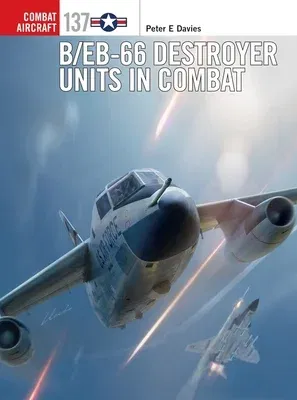A fascinating study of the EB-66, which from 1965 to 1967 was the US
Air Force's only platform for jamming and escort duties for its strike
operations over heavily-defended areas. Without the bravery and skill of
EB-66 operators, US losses would undoubtedly have been much higher
during the Vietnam War, with large tactical strikes on North Vietnam and
Arc Light B-52 raids only available when EB-66 support was possible.
Studies of air combat in the Vietnam War inevitably focus on the
MiG-killing fighter engagements, B-52 onslaughts or tactical strikes on
the Hanoi region. However, underlying all these was the secretive
'electron war' in which highly-skilled electronic warfare officers
dueled with Soviet and North Vietnamese radar operators in the attempt
to enable US strike forces to reach their targets with minimal losses.
Orbiting at the edge of heavily-defended territory, the vulnerable
EB-66s identified and jammed the enemy's radar frequencies with
electronic emissions and chaff to protect the American bombers. Their
hazardous missions resulted in six combat losses, four of them to SA-2
missiles and one to a MiG-21, and they became prime targets for North
Vietnamese defenses when their importance was realized.
This illustrated study focuses on the oft-overlooked B-66 series,
examining their vital contributions to the Vietnam War and the bravery
of those who operated them in some of the most challenging situations
imaginable. Author Peter E. Davies also explores how the technology and
tactics devised during the period made possible the development of the
EF-111A Raven, an invaluable component of the Desert Storm combat
scenario over Iraq and Kuwait in 1991, and the US Navy's EA-6B Prowler,
which entered service towards the end of the Vietnam War.

